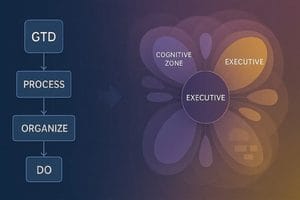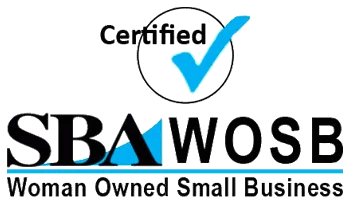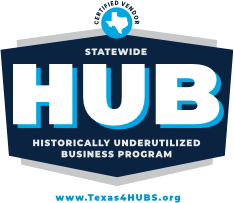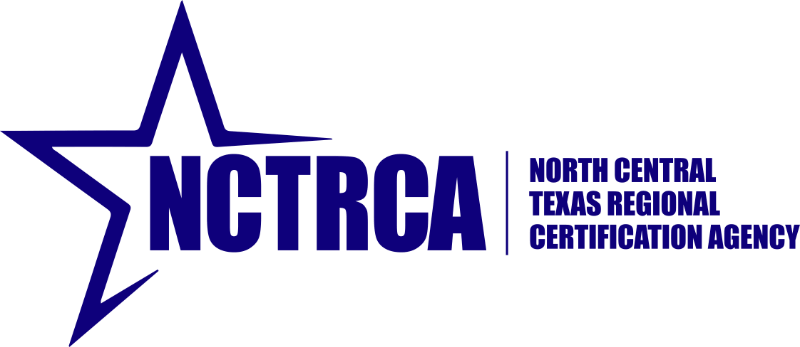When a Fortune 500 company announced a sudden restructuring, the CEO found himself awake at 3 a.m., worrying about how to steer his team through the turmoil. Would he make the right calls? How would his people react? As an executive coach, I’ve sat alongside many leaders in moments like these. Change is inevitable in business—be it a merger, a wave of layoffs, a major market disruption, or hypergrowth—and it often hits without mercy. Research famously shows that over 70% of change initiatives fail, largely due to leaders lacking the right skills to guide their organizations through uncertainty . The difference between those who crumble and those who thrive comes down to one critical factor: resilience.
Resilience is the leadership muscle that lets you not only withstand challenges but grow stronger through them. It’s the CFO staying calm and transparent while announcing painful cuts, or the startup VP who bounces back from a failed product launch with renewed insight. In a world of nonstop crises and rapid shifts, resilience has become a non-negotiable trait for effective leaders . Fortunately, resilience isn’t an innate talent reserved for a few—it’s a quality that can be developed and strengthened, much like building physical stamina. And one of the most powerful ways to build that muscle is through executive coaching.
In this article, I draw on my experience coaching C-suite leaders, VPs, and directors to explore how executive coaching supports leaders in building resilience amid change. We’ll look at real stories of leaders who led through adversity with clarity and confidence, the coaching principles that guided them, and actionable strategies you can apply right away. Whether you’re leading a company through a merger or navigating your team through uncertain markets, my goal is to share insights that help you lead with steadiness, empathy, and courage when it matters most.
By the end, you’ll understand the power of coaching in not just surviving change, but turning it into a catalyst for growth. Let’s dive in.
TL;DR;
•Resilience Is a Learnable Skill: Resilient leaders remain focused and effective under stress, and coaching provides tools to strengthen this “leadership muscle” so you can adapt and grow through adversity .
•Executive Coaching Provides Clarity in Chaos: A coach acts as a thinking partner during upheaval—helping you pause, reflect, and respond rather than react, so you maintain executive presence and make clear decisions when stakes are high .
•Adaptive Leadership Through Change: Coaching encourages strategic thinking and agility. Leaders who treat change as a challenge to be navigated (not a crisis to fear) create plans, communicate effectively, and guide their teams to not only survive change but thrive through transformation .
•Empathy and Connection Matter: During mergers, reorganizations or layoffs, how you lead people is as crucial as what decisions you make. Coaching helps bolster emotional intelligence, ensuring you lead with empathy, transparency, and trust – which in turn strengthens team resilience and engagement .
•Adversity Fuels Growth: The best leaders don’t bounce back after setbacks; they bounce forward. With coaching support, failures become learning moments and challenges become springboards for development, resulting in more confident, adaptable leadership over time .
1. Resilience as a Leadership Cornerstone
Core Insight: In times of upheaval, resilience isn’t just personal mojo – it’s a cornerstone of effective leadership. It’s what keeps you focused under pressure and helps you guide others through the storm.
Early in my coaching career, I worked with a newly promoted VP, Maria, who faced an overwhelming first challenge: her division missed its quarterly targets just as the company announced a major reorganization. Maria felt like she’d failed right out of the gate. We spent our coaching sessions reframing the situation. Instead of seeing a career-ending catastrophe, Maria learned to see a temporary setback and a learning opportunity. I introduced her to a simple coaching principle: “reframe and extract the lesson.” This concept, echoed in leadership research, is about shifting perspective from “I failed” to “What can I learn?” . Week by week, Maria practiced this resilience skill. She identified what did work, what she could do differently, and gradually regained her confidence. Within months, she bounced forward – not just recovering her team’s performance, but improving it. Her ability to stay composed and learn from adversity earned her greater respect from her peers and employees.
Coaching Model/Principle: One model that underpins this approach is Carol Dweck’s Growth Mindset – the belief that abilities and intelligence can be developed through dedication and hard work. In coaching, we cultivate a growth mindset by challenging fixed, self-limiting narratives. For Maria, that meant replacing “I’m not cut out for this” with “I’m growing into this role, and challenges will make me better.” We also used reflective practices often employed in coaching: I asked her powerful questions like, “What would success look like three months from now in this situation?” and “What strengths can you draw on right now?” These questions shifted her focus from the crisis at hand to the possibilities ahead. Over time, she built a habit of meeting setbacks with curiosity instead of fear.
Thought Leadership Support: It turns out Maria’s experience isn’t unique. Studies have found that leaders with high resilience are viewed as significantly more effective by their bosses, peers, and teams, and companies imbued with resilience perform better during change . Harvard Business School professor Nancy Koehn describes resilience as “the capacity to not only endure great challenges, but get stronger in the midst of them” . In other words, resilient leaders don’t just help their organizations survive turmoil – they use it as a springboard to innovate and emerge stronger. This aligns with McKinsey’s observations that the most successful leaders channel their energy into learning from setbacks quickly rather than getting stuck in them .
Real-World Example: Consider the case of Domino’s Pizza’s turnaround (a story I often share with clients to illustrate resilience in action). In the late 2000s, Domino’s faced plummeting sales and brutal customer feedback. Instead of folding, their leadership owned the failures publicly, learned from the critiques (even running ads acknowledging their pizza needed improvement), and rallied their team around a bold plan to change. With a lot of grit – and likely some coaching behind the scenes – Domino’s revamped its recipe and culture. The result? Within a few years, they transformed a failing brand into a market leader. That’s resilience: taking the hit, learning, and coming back stronger.
Actionable Strategies: How can you build resilience in your own leadership? Here are a few coach-endorsed strategies:
•Practice the Pause: When a crisis hits, give yourself a moment to breathe and collect your thoughts. Even a short pause can prevent knee-jerk reactions. One CEO I coached set a rule for himself never to send important emails under duress; instead, he’d draft them, take a walk or call his coach, and revisit the message with a clearer head.
•Reframe the Story: In adversity, ask yourself (or have your coach ask you) questions like, “What might I be learning here?” or “If I overcome this, how will I be stronger?” This shifts your mindset from victim to learner. It’s a simple technique, but incredibly powerful for maintaining a constructive outlook.
•Build a Support System: Resilient leaders rarely go it alone. Cultivate a circle of trusted peers, mentors, or a coach with whom you can candidly discuss challenges. Simply voicing your worries and brainstorming solutions with someone outside the immediate fray provides relief and perspective. As the International Coaching Federation notes, when leaders feel supported, it boosts their confidence and enhances their resilient nature .
•Self-Care is Strategic: Remember that resilience is physical and emotional, not just mental. Prioritize sleep, exercise, and mindfulness practices (even if it’s just 10 minutes of quiet in the morning). I often work with leaders on mindfulness techniques as part of coaching. It’s not fluffy wellness talk – it’s about training your nervous system to handle stress. In fact, coaching often guides leaders in such stress-reduction exercises to enhance emotional regulation, which is crucial in high-pressure leadership .
By intentionally developing your resilience, you create a steady foundation to handle whatever comes your way. You’ll find that setbacks still sting, but they no longer derail you. Instead, each challenge becomes a stepping stone towards greater confidence and capability.
2. Executive Presence Under Pressure
Core Insight: Leaders are most visible—and vulnerable—during times of chaos. Your team watches not just what you decide, but how you carry yourself under pressure. Executive presence is that X-factor that inspires confidence in others, even when the path ahead is unclear. The good news is that executive presence isn’t about having all the answers or a commanding baritone voice on Zoom. It’s about your ability to stay calm, clear, and connected with people when it counts most.
One leader I coached, a COO named James, had to deliver bad news during a company-wide meeting: a beloved project was being scrapped due to budget cuts. Naturally, emotions were high. James himself felt anxious and upset—this project was his “baby.” In our coaching prep, we focused on how he wanted to show up in that meeting. He identified qualities like “calm, compassionate, and firm” to guide his presence. We walked through the scenario, and I even role-played as an upset employee so James could practice responding with empathy and steadiness. The day came, and James spoke with a calm, candid tone. He acknowledged the team’s hard work, explained the tough decision with transparency, and importantly, he held space for questions and emotions afterward instead of rushing through the agenda. The result? While people were disappointed, many told him they appreciated his honesty and composure. He later said, “Coaching helped me keep my cool so my team didn’t lose theirs.”
Coaching Principle: A key coaching principle at play here is “maintaining presence,” which is actually one of the core competencies defined by the International Coaching Federation. In coaching, it means the coach stays fully present, empathetic, and responsive in the moment. For leaders, a similar idea applies: maintaining presence means staying grounded and attentive, even amid chaos. We achieved that with James through a few techniques that you can use too:
•Breathing and Centering: It sounds almost too simple, but taking a few deep breaths and mentally centering yourself before a high-stakes conversation has a noticeable effect. It helped James slow down his racing thoughts.
•Visualization: James envisioned walking into that meeting as the leader he aspired to be—steady and compassionate like a trusted mentor he admired. This mental rehearsal made it easier to embody those qualities in real life.
•Active Listening: Instead of crafting the perfect speech, we concentrated on how he would listen. Executive presence isn’t just about speaking well; it’s about making others feel heard. When employees voiced concerns, James practiced listening without defensiveness, validating their feelings, and then responding.
Thought Leadership Support: Why is presence so important? Consider findings by McKinsey & Company, which highlight that adaptable leaders who coach their team through change set the tone for resilience . In practice, this means when a leader remains calm and coach-like—guiding rather than panicking—the team is more likely to mirror that behavior. Executive presence creates a sort of ripple effect in the organization. Forbes Coaches Council members have noted that executing change is like a muscle that requires practice, coaching, and consistency . This analogy resonates with presence: the more you exercise calm leadership in small everyday moments, the stronger your “presence muscle” becomes for the big, challenging moments. Over time, your team grows to trust that even if things go wrong, you will lead them through it with clarity.
Real-World Case: During the early days of the COVID-19 pandemic, I volunteered coaching hours to a healthcare executive, Nina, who was scrambling to manage fast-moving changes. Policies and protocols were shifting daily, her staff was anxious, and she was working around the clock. Nina admitted she often felt like a duck on a pond—appearing to glide on the surface while paddling furiously (and anxiously) underneath. Through coaching, we prioritized one thing she could control: her communication style. She instituted a daily five-minute huddle with her department, where she would calmly update everyone on new developments (even if the update was “we’re still figuring things out”), and more importantly, she listened to frontline concerns. She kept her tone confident and solution-oriented, even on days she felt unsure. That consistency in presence became a lifeline for her team. One nurse told her, “We get strength from your steadiness.” Not surprisingly, Nina’s department had lower turnover during the crisis than similar units at that hospital.
Actionable Guidance: To cultivate executive presence in your own leadership, consider these coaching-inspired tips:
•Set an Intention Before Big Interactions: Take 30 seconds before a meeting or call to define how you want to show up (e.g., “I will be patient and positive”). This primes your brain to align with those qualities, almost like putting on a mental uniform.
•Use a Grounding Ritual: Develop a simple routine that helps you enter a calm state. Some leaders keep a short journal to jot down worries and “park” them before facing their team. Others do a quick breathing exercise or power pose. Find what works for you – it could be as subtle as straightening your posture and planting both feet firmly on the floor as a reminder to stay grounded.
•Embrace the Power of Pause: In heated discussions or crisis moments, don’t be afraid to pause before responding. A thoughtful silence feels much more composed than a rushed, shaky answer. It also shows your team that you’re truly considering things. As one of my clients quipped, “I realized silence is actually part of executive presence – it shows we’re not rattled into rambling.”
•Keep Communication Clear and Confidence-Building: Especially during change, people look to leaders for cues. Be truthful about challenges, but also point to a path forward. For instance, instead of “I have no idea what we’ll do,” try “This is a tough situation, but we’ll work through it together. Here’s our next step.” It’s about balancing honesty with hope. Leaders who communicate often and openly during change – even if all the answers aren’t known – build credibility and calm the collective anxiety.
Coaching can significantly help here by role-playing tough conversations and providing feedback on how you come across. Over time, these practices become second nature. You’ll notice an interesting shift: as you develop a steadier presence, your team becomes more resilient too, because they trust your guidance even in uncertainty. In essence, your calm is contagious.
3. Adaptive Leadership: Clarity and Agility in Change
Core Insight: In fast-changing business environments, leaders must become adaptive – able to make decisions with incomplete information, pivot strategies quickly, and still keep everyone aligned. It’s like navigating a ship in a storm: you often can’t stick to the original course, but you still need to chart a direction and communicate it clearly so your crew doesn’t lose faith. Executive coaching shines in this arena by serving as a thought partnership when you’re facing complex, high-stakes choices. A coach can’t decide for you, but they can provide the frameworks and probing questions that cut through chaos and reveal a path forward.
I recall coaching Samantha, the CTO of a tech firm that was experiencing hypergrowth. On the surface, hypergrowth is a “good” problem – new customers pouring in, revenue skyrocketing. But internally, things were fraying at the edges: teams were overworked, processes were breaking, and Samantha was pulled in a hundred directions. In one coaching session, she confessed, “I feel like I’m firefighting all day. I don’t have time to think, and I worry I’ll drop the ball on something critical.” This is a classic adaptive leadership challenge: how do you think strategically when you’re inundated tactically? We tackled it by introducing structure to her approach. I guided Samantha through the GROW model, a coaching framework that stands for Goal, Reality, Options, Will . Here’s how it played out:
•Goal: First, we clarified what winning would look like in this chaos. Her goal was to scale the tech team and infrastructure to handle 3x growth without burning people out or collapsing systems.
•Reality: We took stock of the current situation. What were the specific bottlenecks? (Hiring couldn’t keep up; communication was siloed.) What resources were available? (They had budget approval to hire, but their recruitment process was slow.)
•Options: This is where a coach’s open-ended questions helped Samantha brainstorm beyond her initial tunnel vision. What could she delegate or pause? Could she bring in interim contractors? How might she restructure team meetings for efficiency? We generated multiple ideas without judging them.
•Will (or Way Forward): Finally, Samantha chose a few actions to commit to. She decided to bring on an external consultant to overhaul hiring, set up twice-weekly “stand-up” meetings for cross-team alignment, and dedicate 90 minutes every Friday for strategic planning (no cancelling allowed, as a rule with herself and her assistant).
By breaking the overwhelming challenge into this structured conversation, Samantha went from feeling helpless to having a clear plan of attack. In subsequent sessions, we reviewed progress, addressed new roadblocks, and kept refining the approach. Over time, she turned from a firefighter into a true fire chief, proactively leading growth rather than constantly reacting to it.
Coaching Principle/Model: The example above illustrates how coaching models like GROW provide a lifeline when everything feels like a priority. Another principle is situational leadership – adjusting your style to the needs of the moment. Through coaching, leaders learn to flex between directing, coaching, delegating, and empowering as situations evolve. For instance, during a merger integration (when teams are confused and hungry for guidance), you might need to be more hands-on and communicative. But once new processes stabilize, you can step back into a mentoring role and let others take more ownership. A coach will often ask, “What does your team need from you right now?” to help you find the right leadership approach for the situation.
Research and Thought Leadership: It’s often said that “change is the only constant” in business, and leaders who embrace that mindset come out ahead. A Tandem Coaching insight I frequently share is that change management skills — like communication, strategic thinking, and yes, resilience — drastically improve your odds of success in any transformation . In fact, companies led by adaptable, change-capable leaders are far more likely to hit their goals in volatile times . McKinsey research reinforces this: companies that invest in building flexible, resilient environments and encourage quick decision-making tend to outperform peers during disruptions . An adaptable leader creates clarity for others by quickly figuring out the “new game plan” and conveying it in a simple, reassuring way.
For example, during one coaching engagement at a manufacturing firm, the client (a plant manager) faced a sudden supply chain disruption when a key supplier went bankrupt. We applied adaptive thinking: within 48 hours, he assembled a crisis team, identified alternative suppliers, and crafted a candid update to customers about potential delays and the steps being taken. That transparency kept customer trust intact. He later told me, “Having a coach to talk it through let me sort my thoughts faster. Instead of silently stressing, I had a sounding board and could move to solutions.” His company got through the crunch with minimal loss of business. Stories like this echo a core truth: leaders who take a proactive, communicative stance in a crisis can turn resistance into a driving force for progress , often even strengthening relationships along the way.
Real-World Example: On a larger scale, think of companies like Netflix or Amazon. Their leaders famously pivot and adapt to change: Netflix shifted from mailing DVDs to streaming to producing original content, practically redefining their business every few years. A leader like Reed Hastings didn’t do that on a whim; it required continually learning, listening to advisors (in essence, being coachable), and having the courage to chart a new course when the old one wasn’t future-proof. Not every leader will face a Netflix-level disruption, but the principle holds at any scale: stay curious, scan the environment, and be willing to adjust your sails. Coaching often bolsters this adaptability by introducing perspectives outside the leader’s immediate echo chamber.
Actionable Strategies: To hone your adaptive leadership skills, try these tactics that I frequently recommend in coaching sessions:
•Scenario Planning: Don’t wait for crisis to think about “what if.” Set aside time (with your team or coach) to brainstorm a few worst-case and best-case scenarios for your business. Ask, “If X happens, how would we respond?” This exercise widens your peripheral vision and makes you more agile if things change suddenly, because you’ve mentally rehearsed alternatives. Even if reality doesn’t match any scenario exactly, you’ll be quicker to adapt your game plan.
•Prioritize Ruthlessly: In upheaval, everything can feel urgent. A coach can help you distinguish what truly matters. One useful question: “If you could only accomplish two things this week, which would make the biggest difference?” Focus on those first. Adaptive leaders are masters of prioritization; they recognize that doing a few things well beats doing too many things poorly.
•Delegate and Empower Others: You can’t adapt if you’re bogged down in the weeds. Identify team members who can take ownership of certain tasks or decisions during change. Not only does this free you up to think strategically, it also builds resilience in your organization by involving others in problem-solving. Plus, when people have a hand in the solution, they’re more bought in and less fearful of change. Coaching can guide you on what and how to delegate – sometimes it’s as straightforward as drafting an email together to hand off a project, along with expressing your confidence in that person.
•Keep Communication Flowing: In adaptive leadership, clarity is your best friend. Even if your strategy shifts, communicate the what and the why to your team. During coaching role-plays, I often push leaders to explain a decision as if to a skeptical colleague. If the rationale sounds muddy, we refine it. Aim to share updates early and often; silence or secrecy in turbulent times breeds rumors and fear. You’d be amazed how much trust you earn by simply keeping your team in the loop (“Here’s what we know, here’s what we’re still figuring out…”).
By becoming more adaptive, you essentially future-proof your leadership. Change may still throw curveballs, but you’ll have the reflexes to hit them. And remember, you’re not in it alone – enlisting a coach or mentor during transformative periods can provide clarity and accountability, turning even daunting changes into manageable, and sometimes exciting, leadership challenges.
4. Leading with Empathy and Building Trust
Core Insight: When things get tough, people look to their leaders not just for plans, but for emotional support and understanding. Empathy in leadership isn’t about coddling; it’s about recognizing that changes like layoffs, restructurings, or rapid pivots affect your people in profound ways. Leading with empathy means you consider the human side of change, not as an afterthought, but as a central part of your strategy. This is where coaching can profoundly impact a leader’s effectiveness: it helps you tune into your emotional intelligence, improve how you communicate, and consciously shape the culture during adversity.
Let’s revisit the CEO from the introduction, the one anxiously facing a major restructuring. Let’s call him Robert. In our coaching sessions, Robert initially wanted to focus on the mechanics of the reorg – org charts, processes, strategy. Important stuff, no doubt. But as I listened, I sensed a blind spot. I asked, “How do you think your team is feeling about all this?” He paused and admitted he hadn’t really asked them yet; he was avoiding those messy conversations. This is common – leaders can get so wrapped up in executing change that they forget to acknowledge the emotional toll on their people (and themselves). So, we shifted focus. I encouraged Robert to hold a series of small group dialogues with his VPs and directors before the big changes rolled out. We even role-played how he would start these meetings. Instead of diving into timelines and org charts, he opened with something heartfelt: “I know this transformation is going to create uncertainty. I want to hear your concerns and ideas so we can get through it together.” That simple expression set a different tone.
Over the next weeks, Robert became more comfortable showing empathy. He listened actively to feedback – some of it critical – without getting defensive (a skill we practiced in coaching). He acknowledged people’s fears and consistently reminded them why the change was happening and how he intended to support everyone through it. One of the coaching principles I reinforced with Robert was authentic communication – being transparent about what you know and what you don’t, and communicating with warmth and respect. It’s amazing how much goodwill you can build by leveling with people.
Coaching Model/Principle: A relevant model here is Emotional Intelligence (EQ), popularized by Daniel Goleman. EQ involves self-awareness, self-regulation, social awareness (empathy), and relationship management. Executive coaching often acts as “EQ training” for leaders. In Robert’s case, we worked on self-awareness by identifying his own feelings (he realized he was scared of looking incompetent, which is why he was avoiding discussions). We tackled self-regulation by developing tactics for him to stay calm when employees vented (deep breathing, reminding himself not to take it personally). We boosted social awareness by literally mapping out stakeholders and guessing what each might be feeling or needing. And for relationship management, we crafted his messaging and actions to build trust—like scheduling regular check-ins with teams post-announcement to show continued support. According to the ICF, coaching can activate and enhance a leader’s emotional intelligence and cultivate resilience at the same time . These two go hand-in-hand: when employees feel their leader “gets” them, they’re more resilient through tough changes because they know they’re not just cogs in a machine.
Thought Leadership Support: Numerous studies back up the power of empathetic leadership. For example, Harvard Business Review has highlighted that managers who demonstrate compassion and understanding tend to have more loyal and engaged teams, especially in times of upheaval. Forbes puts it succinctly: “Good management goes beyond surviving change. It strengthens resilience, prioritizes people, and continues building inclusive workplaces through the turmoil.” . In practice, that means the best leaders don’t focus only on the bottom line during a crisis; they double down on team morale, inclusion, and culture. Why? Because a team that feels valued and safe will walk through fire with you to achieve the mission. Conversely, if people feel ignored or disposable, even the most brilliant strategy can fail due to lack of buy-in.
A real-world case in point: during a recent industry downturn, two competing companies in the same sector had to downsize. Company A’s leadership handled it by delivering terse, impersonal memos and largely avoiding team interactions. Company B’s leadership, however, took a more empathetic approach – the CEO and managers held town halls, acknowledged the pain of layoffs, gave as much transparency as possible, and provided support (like career transition workshops for those leaving and counseling for those staying). The outcome? Company A not only had a wave of voluntary departures of surviving employees, but also struggled to regain productivity for months. Company B, while it faced the inevitable sadness and anger that come with layoffs, saw its remaining team stabilize faster and refocus on the work. A year later, Company B bounced back growth-wise, while Company A was still fighting low morale. The contrast underscores a clear lesson: how you treat people during the worst of times defines your culture and either fortifies or fractures your organization’s resilience.
Coaching in Action: One of my favorite coaching moments was with a director who had a very analytical mind. We’ll call him Vikram. Brilliant guy, but he often struggled with the “soft” side of leadership. Amid a challenging project failure, he was inclined to just present the facts and a new plan, soldiering on without addressing his team’s disappointment. In coaching, I gently pushed him to consider a different approach. We used a method called perspective taking – I asked him to imagine he was one of his team members hearing the news. “What would you need from your leader?” I asked. He thought and replied, “I’d want to know my efforts were appreciated and that it’s okay to feel upset, and I’d want to hear how we’ll prevent this in the future.” That was a breakthrough for Vikram. He realized that by acknowledging emotions and showing care, he wouldn’t be seen as weak – he’d be seen as stronger and more trustworthy. In the end, Vikram addressed his team with both candor and care: he praised their hard work, owned the mistakes management had made, expressed empathy (“I know this outcome is frustrating; I feel it too”), and then rallied them with lessons learned and next steps. The team’s response was overwhelmingly positive; many folks told him it was the best all-hands they’d ever attended, even though it was about a failure.
Actionable Guidance: How can you lead with empathy and build trust during challenging times? Consider these coaching-driven practices:
•Listen First, Talk Second: When big changes happen, make time to listen to your people’s concerns. This could be via town hall Q&As, one-on-one check-ins, or anonymous feedback channels. In coaching, we say, “meet them where they are.” If people are anxious or angry, acknowledging that (“I understand many of you are worried about X…”) can defuse tension. Avoid the urge to immediately counter or defend—sometimes people just need to feel heard.
•Show You Care (Authentically): Don’t be afraid to show a bit of vulnerability. Saying “This decision was one of the hardest I’ve had to make” or “I lose sleep knowing the impact this has on you and your families” does not make you a weak leader. It makes you human. Of course, pair empathy with optimism: empathetic leaders validate feelings and then help people see a way forward. For example, “I know this is tough, and we will get through it together. Here’s how we’re approaching it…”.
•Be Transparent and Follow Through: Trust is built when your actions match your words. If you don’t have all the answers, it’s okay to say “I don’t know yet, but I will update you as soon as we decide” – and then make sure you do it. If you commit to some support (like additional training, or an open-door policy for concerns), honor that commitment. In coaching sessions, I sometimes role-play as a skeptical employee and have the leader practice answering blunt questions honestly. Transparency can be uncomfortable, but it’s a cornerstone of credibility. Employees can often forgive tough news if they feel you’re straight with them; it’s surprises and spin that undermine trust.
•Reinforce Shared Purpose: In times of adversity, remind everyone (yourself included) of the why. Why are we undergoing this change? What is the vision on the other side? A unifying purpose can act as emotional glue. For instance, a non-profit leader I coached had to dramatically cut budgets. She consistently reminded her team, “We’re doing this now so that our mission can continue helping people 10 years from now.” It gave meaning to the pain, which kept the team’s spirit intact.
Leading with empathy doesn’t mean you’ll please everyone or avoid all difficult decisions. But it does mean that you’ll foster a loyal and resilient team culture. People will remember that you led with heart and clarity. And as a leader, there’s no greater compliment than hearing your team say, “We trusted you to have our backs, even when things got hard.” Executive coaching can amplify this aspect of your leadership by increasing your self-awareness and people skills. In fact, many leaders tell me that the empathic listening they experience in coaching becomes the model for how they listen to their own teams – a beautiful example of coaching’s ripple effect.
Conclusion
Change may be a constant in business, but how you lead through change is what sets exceptional leaders apart. From personal resilience and executive presence to adaptive strategy and empathetic connection, we’ve seen that these qualities aren’t purely innate traits – they can be cultivated and strengthened. Executive coaching is a powerful catalyst in this development. It provides a confidential space to reflect, the challenge to grow, and the support to navigate storms with greater confidence and clarity.
In my years as a coach, I’ve witnessed CEOs steer companies through crisis and come out the other side stronger; I’ve seen VPs evolve from overwhelmed to composed, and directors transform teams skeptical of change into champions of it. The common thread was not that they had all the answers from the start, but that they were willing to learn, adapt, and lean into support. They invested in themselves and their leadership capabilities, often through coaching, and it paid dividends in how they showed up for their organizations.
Reflect for a moment on your own leadership journey. How do you handle change today, and how would you like to handle it tomorrow? What would it mean for you to be the leader whose calm inspires calm in others, whose vision cuts through uncertainty, and whose empathy builds unshakeable trust? These aren’t distant ideals; they are achievable with mindful effort and perhaps a guiding hand along the way.
If you’re facing turbulence or preparing for the unknown, consider enlisting a partner in your corner – be it a mentor, a peer, or a professional coach. Sometimes a conversation can unlock an insight that changes everything. At the end of the day, building resilience is a continuous journey. Every challenge is an opportunity to hone your leadership craft.
As you move forward, I encourage you to apply one idea from this article in your day-to-day leadership. Maybe it’s practicing that moment of pause before reacting, or reaching out to a team member purely to listen, or setting up a meeting with a coach to focus on your growth. Small steps, taken consistently, will build your resilience over time. And when the next wave of change comes—and it will—you’ll be ready to lead your team with the kind of strength, clarity, and heart that defines truly great leaders.
Remember: Change doesn’t get easier; you get stronger. With the right support and mindset, you won’t just face the future – you’ll shape it.
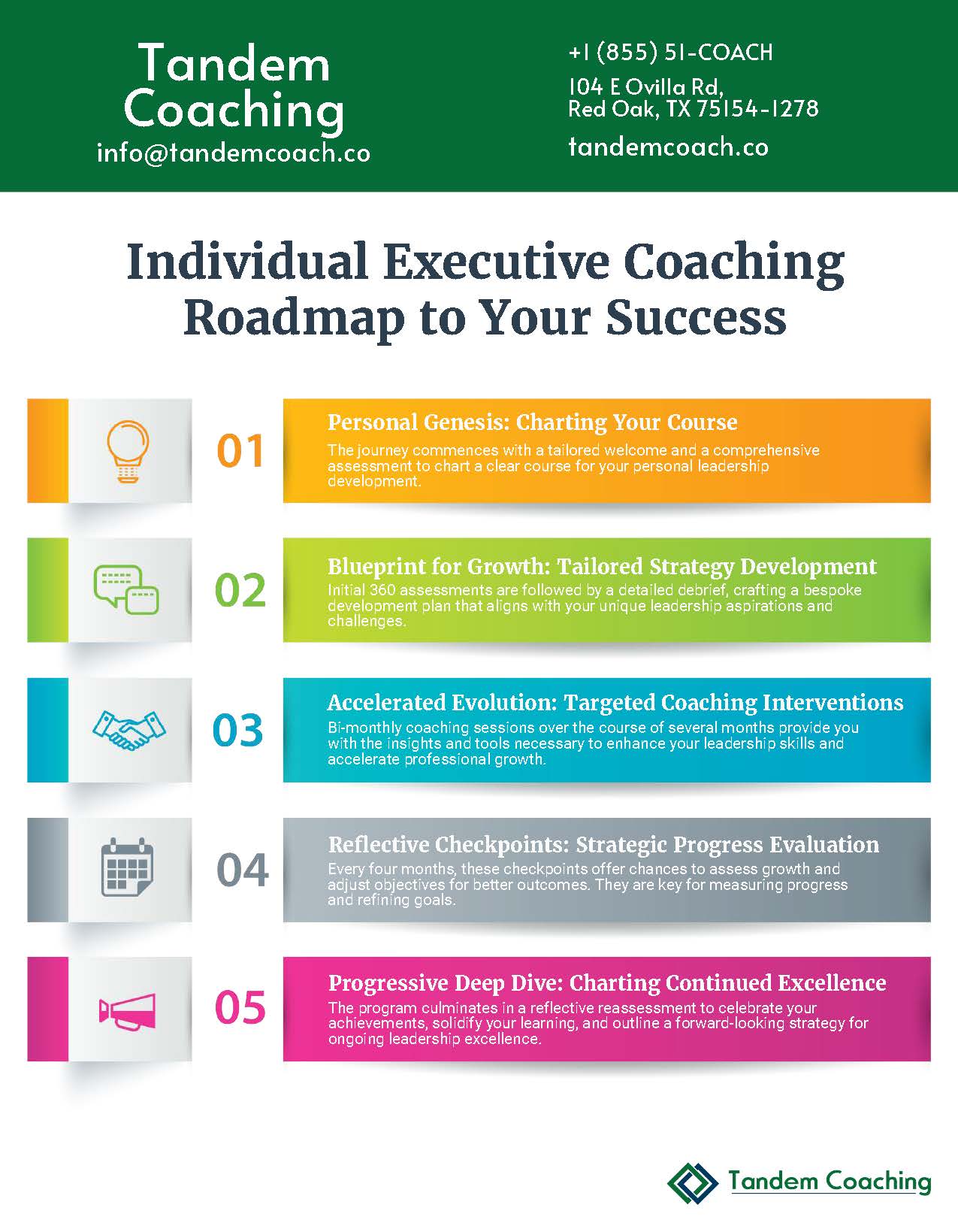

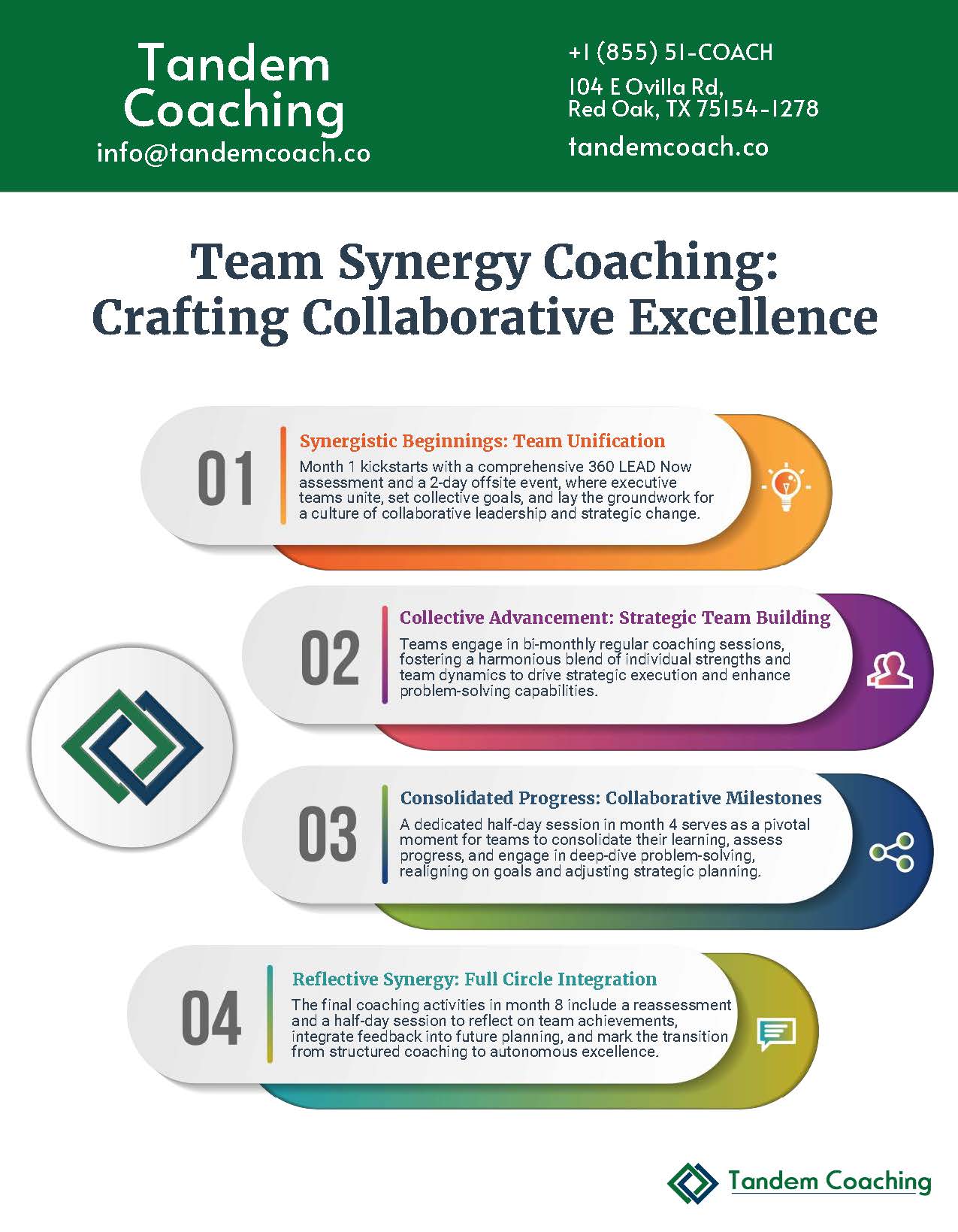
Boost Your Leadership Team Success!
Take your leadership team to the next level and achieve great results with our executive coaching.
Learn how our coaching and ASPIRE method can change things for you—get a free brochure to begin your journey.
About the Author
Cherie Silas, MCC
She has over 20 years of experience as a corporate leader and uses that background to partner with business executives and their leadership teams to identify and solve their most challenging people, process, and business problems in measurable ways.

